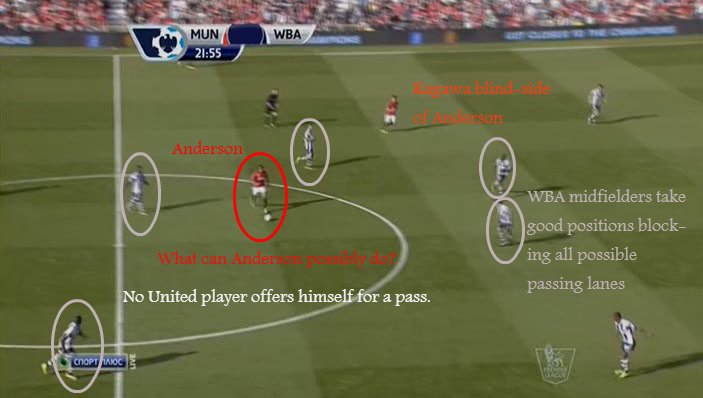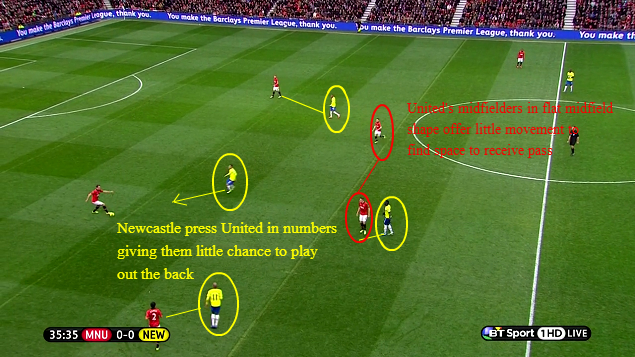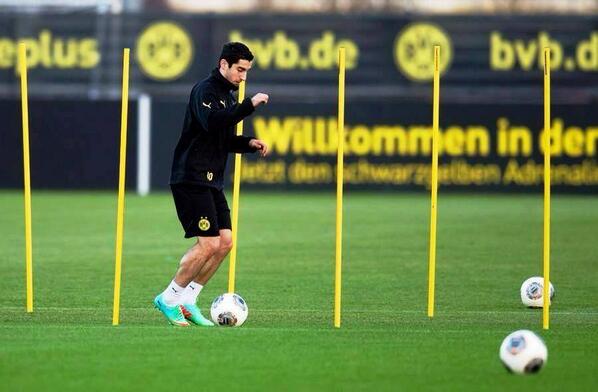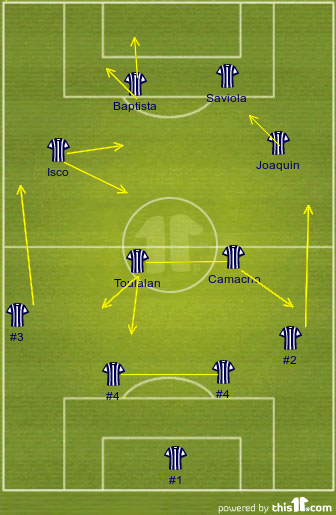 “He understands the game. Not all players do. A lot of players understand his position. Philipp can play in all positions. Football is a game where people move and you have to decide in one second what’s going on in your position as well as all around the field, and what he decides in that moment is right. Philipp Lahm is perhaps the most intelligent player I have ever trained in my career. He is at another level,” This coming from a coach who has just managed the likes of Sergio Busquets, Xavi and Iniesta.
“He understands the game. Not all players do. A lot of players understand his position. Philipp can play in all positions. Football is a game where people move and you have to decide in one second what’s going on in your position as well as all around the field, and what he decides in that moment is right. Philipp Lahm is perhaps the most intelligent player I have ever trained in my career. He is at another level,” This coming from a coach who has just managed the likes of Sergio Busquets, Xavi and Iniesta.
If I had told you at the start of the season that Phillip Lahm will be deployed in a midfield role, you probably would have ended the conversation. Not because Lahm is inept or particularly lacks the traits of a midfielder, but because of the plethora of talent in the German champions’ midfield and also the fact that Lahm is/was the best defender in the world.
Bayern’s #21’s versatility has never been in question, putting in impressive shifts at left back and his preferred role, right back. As a fullback, the German was known for his tackling, reading of the game, and basically every possible trait needed for the fullback role. He also provided another dimension to Bayern’s attack, bombarding forward to provide support. His overlapping & underlapping runs, saw him forge a potent combination with Robben on the right wing, which worked a treat for Jupp Heynckens’ treble winning team last season.
This season however, Philipp Lahm has been given a new role in midfield, his redeployment just goes and to show how complete and rounded his game is, considering the tactical and technical demands of the midfield role vary completely from that of a fullback.
During the summer when Bayern Munich signed Mario Gotze and Thiago Alcantara, with the likes of Bastian Schweinsteiger, Javi Martinez, Toni Kroos already at the club, many football pundits and fans were left questioning how Pep will manage all these world class midfielders. What will be the midfield pairing? Who plays in the pivot? Surprisingly It’s captain Lahm who has been giving a more advanced role paired in central midfield with either Kroos/Thiago in a 4-1-4-1 or as the holding midfielder, or as the hipsters will argue, the advanced sweeper. In preseason, we saw the first glimpse of Lahm in the midfield role against Hansa Rostock acting as the shuttler, a game in which he coincidentally scored.Well played Pep.
Pep Build up philosophy.
 Pep Guardiola is without a doubt one of the most tactically astute coaches in the modern game. As a student of the likes of Van Gaal, Johan Cruiff and Marcelo Bielsa, the Bayern Munich manager was fortunate enough to learn and study the ideas of great football visionaries. Pep is a firm believer of controlling spaces and playing the ball out of the back. His game is fixated on mastering spaces and dictating the tempo of the game with slow build up play, triggering opposition players to move to press, hence exploiting gaps.
Pep Guardiola is without a doubt one of the most tactically astute coaches in the modern game. As a student of the likes of Van Gaal, Johan Cruiff and Marcelo Bielsa, the Bayern Munich manager was fortunate enough to learn and study the ideas of great football visionaries. Pep is a firm believer of controlling spaces and playing the ball out of the back. His game is fixated on mastering spaces and dictating the tempo of the game with slow build up play, triggering opposition players to move to press, hence exploiting gaps.
“The intention is not to move the ball, rather to move the opposition”. By keeping the ball for long periods of time, opposition players are sucked into pressing before suckerpunching them with a vertical or killer pass.
Like Schweinsteiger, Thiago or Kroos, when Lahm is deployed as the pivot, he’s imperative in Bayern’s build-up phases. His new role is similar to that of a certain, Sergio Busquets. As the pivot, he plays a huge role in Bayern’s transition phase, receiving the ball from center-backs before progressing into forward positions.
Lahm adds another dimension to Bayern’s attacking phases with penetrative pass through the lines, breaking opposition midfield lines. The 30 year old provides vertical thrust and movement to initiate attacks for Pep’s team. He takes up a proactive position and opens spaces/gaps with intelligent passing through the lines. His verticallity is key to enhancing speed in transition phases.
The modern game requires a lot of movement and interchanging, particularly in midfield to dominate possession and control the tempo of the game. Depending on the nature of the opposition, Pep rearranges his pack. In certain games, it is Kroos/Thiago as the pivot acting as the regista with Lahm playing in a more advanced position in central midfield. Interchangeability is of course a prominent feature in Pep Guardiola’s team
For now, it remains unclear whether Lahm’s redeployment is long-term. Guardiola stated in preseason that Lahm played in midfield as a result of Javi Martinez and Bastian’s injuries but with the success he’s having playing in midfield, it wouldn’t surprise me if he played there long-term.











 “He is a player who can really make a difference and he can continue to improve. He has settled much quicker than new additions in recent years. Ilkay Gundogan took half a season to settle and Robert Lewandowski longer than that.”
“He is a player who can really make a difference and he can continue to improve. He has settled much quicker than new additions in recent years. Ilkay Gundogan took half a season to settle and Robert Lewandowski longer than that.” Mkhitaryan’s stats make good reading. 4 goals and 5 assists in 14 games this season, averaging 2.4 key passes per game with a pass success rate of 80%. The Armenian has certainly fit in at Dortmund like an ‘arse in a bucket’.
Mkhitaryan’s stats make good reading. 4 goals and 5 assists in 14 games this season, averaging 2.4 key passes per game with a pass success rate of 80%. The Armenian has certainly fit in at Dortmund like an ‘arse in a bucket’.











